Reviews
Zombie / Zombie Flesh Eaters
Lucio Fulci
Italy, 1979
Credits
Review by David Carter
Posted on 06 October 2010
Source Shriek Show DVD
Categories 31 Days of Horror VII
Italian horror cinema has been accused of a variety of offenses over the years. It is has been labeled as pessimistic, overly violent, and too difficult to comprehend. These criticisms are not without merit depending on the films considered, however. But it is my assertion that those containing aspects of all three supposed flaws are actually a separate subgenre of Italian horror, Italian Nightmare Horror. The films within this subgenre present viewers with bleak world views and jarringly horrific imagery, and eschew cinematic logic for an approach that is more ethereal and oneiric. Over the coming weeks, we’ll be looking at four examples of Italian Nightmare Horror: Lucio Fulci’s Zombi 2 and The Beyond, Dario Argento’s Inferno, and Lamberto Bava’s Demons.
Former doctor turned art critic Lucio Fulci began working in cinema in the late fifties as a contemporary and occasional student of Mario Bava. A short, garrulous man by all accounts, Fulci spent much of the sixties working on various low-budget films, most often cash-ins on international hits like the James Bond series and sex comedies. Fulci came into his own in 1969 with the giallo Perversion Story, a beautifully shot, complex film on par with Bava’s work. He continued to work in a variety of genres with little acclaim save for two increasingly violent gialli - A Lizard in a Woman’s Skin and Don’t Torture a Duckling - and a late entry into the spaghetti western canon, Four for the Apocalypse. In 1979 the prolific Fulci was roughly twenty years and thirty films into his career and was about to enter into a period of filmmaking much darker in tone than his earlier work or the films of his contemporaries.
The period beginning with Zombi 2 and ending with The New York Ripper is considered by many to be his creative and artistic zenith, a period during which he broke from conventional narrative storytelling to arrive at something more akin to surrealism. It is in this period that we see the pessimism that pervades many Italian horror films of the period brought to the forefront. These films offer nothing in the way of catharsis for audiences, as is the standard for the horror genre, and instead constantly return to a concept of death as inescapable and inevitable. There are no heroes, no villains, only mortals trapped in a supernatural world beyond their comprehension and from which they are unable to escape. The films mentioned above bookend Fulci’s “Gates of Hell Trilogy” and serve as a metaphoric beginning and end to Fulci’s descent into the darkness. Zombi 2 is the beginning of sundown.
Zombi 2 begins with an image both ominous and serene: an unmanned boat slowly drifting into Manhattan harbor. Authorities board the mysterious ship to find the passengers brutally slaughtered. As they examine the carnage for clues, the perpetrator is revealed when a large, discolored creature resembling a man bursts through a cabin door and kills one of the officers. In the ensuing confusion, the “thing” falls into the water and is presumed dead when it doesn’t resurface.
The boat is registered to a Dr. Bowles, so the police question his estranged daughter, Anne, but she can offer them no insight into her father’s current whereabouts or why his boat has drifted into Manhattan. Concerned, Anne enlists the help of tabloid journalist Peter to unravel the mystery and a late-night investigation of the boat tells them that the answers they seek are held by his partner, Dr. Menard, on the Caribbean island of Matool. Menard is attempting to find a scientific explanation for what the islanders refer to as the “curse,” a disease where after a prolonged illness an individual dies and then seemingly returns to life. Menard’s wife and a host of others are killed as all of the corpses on the island - even those that are centuries old - rise from their graves to attack the living. After a long siege, Anne and Peter barely escape but they return home to find New York City thrown into chaos as legions of the undead lay waste to the living.
Zombi 2 introduces several themes that went on to become recurrent in Fulci’s subsequent films, most notably the living dead. The zombie has been used in a variety of metaphorical ways in cinema but Fulci’s zombies have the very specific purpose of signifying the breakdown of the barrier between life and death and a blurring of the natural and supernatural worlds. The terror they induce is not generated by the havoc they cause or their appearance but rather by their mere existence. Matool is experiencing an upheaval of the natural order of the world and zombies, in a concept Fulci would return to frequently, are the first indicators of a coming apocalypse.
Unlike the standard horror trope of characters opening doors they shouldn’t or similar behavior, Fulci ascribes no responsibility for the events of the film to any of the characters. No one is responsible for what’s happening; there is no causality or logic to what occurs. In fact, one of Zombi 2’s defining characteristics is the absence of logic, or rather, the pervasiveness of illogic or dream-logic. Events are not caused but instead simply occur, keeping both the characters and the audience in a constant state of suspense as nothing is ever foreshadowed.
The supernatural bleeding into the natural allows Fulci to use dream-logic liberally without it being overly jarring to viewers. Fulci utilizes many cinematic techniques to enhance the oneiric quality of the film. There is increasingly loud tribal drumming heard in the distance that seemingly has no source. The drums are an indicator of how “deep” into the dream-state the film has gone and their increased tempo signifies the increased danger the characters are facing. Fulci continually juxtaposes the horrifying and the beautiful as the film progressively becomes more nightmarish. Nowhere is this more evident than in an incredibly realized 360° shot of a shambling zombie. Fulci’s technique makes the disgusting creature seem natural rather than uncanny, reiterating the narrative idea of the unnatural becoming the new order of the world.
Fulci’s infamous excesses of violence are also used to signify the total war between the natural world and the supernatural. This is especially true for one of the film’s most infamous scenes, the sequence where a zombie battles a shark. The confrontation between animal and zombie is interpreted by most viewers as comedic and yet the symbolism is important to understand the film. The shark is representative of the natural order of the universe and its defeat by the zombie is indicative of the destruction of that order and its replacement by chaos. In the film’s later sections, the “curse” is no longer depicted as an infectious disease but a supernatural power, reviving corpses that died by other means as proof that chaos is the new world order and that the natural laws are being inverted.
Zombi 2’s other notable scene is of Fulci’s trademark graphic eye trauma. Fulci likely returned to the image often because it is both an impressive special effect and a rich metaphor. If we have in mind the adage that “the eyes are the windows to the soul,” Fulci uses eye trauma to signify not only the destruction of the physical but the spiritual as well. Cinematically, these scenes are effective because they run counter to the expectations of the audience. The shock comes not because Fulci has shown the effects of the violence, but because he shows the violence itself. Zombi 2’s cringe-inducing eye impalement is executed without the benefit of cut-aways. At the moment at which the audience expects the character to be rescued or for the director to spare us the violent act, Fulci gives us no reprieve from the horror.
The details of how Zombi 2 came into existence are not insignificant to its structure and themes. Even though Fulci had recently been successful with original material, he was still a “hired gun” in many regards for his ability to deliver films quickly and under budget. The success of George A Romero’s Dawn of the Dead in Europe ensured that the reactionary and profit-minded Italian exploitation studios would attempt to capitalize with their own zombie films. Dawn of the Dead’s international title was Zombi, hence the otherwise inexplicable numeral behind Fulci’s title—it was to be marketed as a sequel to Romero’s film. Fulci was no stranger to this process, but it was clear that his goal was to outdo rather than to simply cash in.1
Fulci took from Romero’s film its easily recognizable leitmotif, capitalism, and increased the focus on it significantly. What Romero’s film simply points out Zombi 2 condemns and remedies. An ardent Marxist, Fulci structured Zombi 2 as a symbolic rebellion of oppressed indigenous peoples against European and American colonialism. In addition to the correlation with the Caribbean-based zombie films I Walked with a Zombie and White Zombie, the setting of the film also invokes images of European colonialism, the slave trade, and economic exploitation. The zombies of Matool are never shown attacking their fellow islanders, only the foreign interlopers, and it should not be seen as a coincidence that the zombies are all of African or Caribbean origin.
Reading the film through a Marxist lens paints several scenes in a different light. The strongest connection can be seen in the aforementioned “eye gouging scene.” The victim is Dr. Menard’s wife and the setting is their estate, and Mrs. Menard, having just exited the shower, is in a state of undress. The black zombies attacking the estate of a wealthy white couple is a self-evident reference to Marxist revolution, and the idea of a race/class conflict is further increased by the sexual undertones of the act and the taboo of miscegenation. Furthermore, one of the main characters falls prey to the reanimated corpse of a Spanish conquistador, and the bite represents a symbolic transference of the “curse” to modern man for the sins of past colonialism. Finally, a Marxist reading of the film’s final image of a New York teeming with zombies transforms the scene from a global apocalypse to a global worker revolution.
The fact that Zombi 2 lends itself to different interpretations firmly places it within the sub-genre of Italian Nightmare Horror as, like a dream or nightmare, its true meaning is wholly subjective. It will mean different things to different viewers. Some will be unable to stomach the graphic violence and gore, while others will find the film hauntingly beautiful. Fulci’s goals were likely toward the latter end of that spectrum. The concepts he introduces in Zombi 2 would be continued in his next film, City of the Living Dead, which uses a similar structure and theme. City of the Living Dead goes even farther away from narrative storytelling but is ultimately only a prelude to Fulci’s surreal masterpiece, The Beyond.
- Romero was assisted on Dawn of the Dead by Italian horror maestro Dario Argento and reports vary on the extent of Argento’s influence on the film. Fulci’s professional rivalry with Argento most likely played a role in why Zombi 2 represented such a massive creative leap forward for the director. ↩
More 31 Days of Horror VII
-

The Thin Blue Line
1988 -

The Ninth Configuration
1980 -
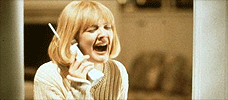
Scream
1996 -
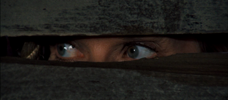
Dying Room Only
1973 -

Brain Dead
1990 -
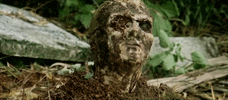
Zombi 2
1979 -
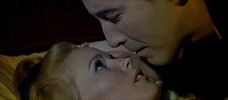
Dracula Has Risen from the Grave
1968 -

The Storyteller
1988-1989 -
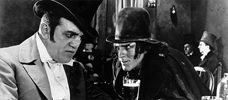
Dr. Jekyll and Mr. Hyde
1920 -
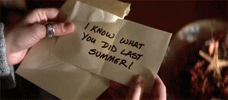
I Know What You Did Last Summer
1997 -
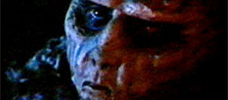
Don’t Be Afraid of the Dark
1973 -
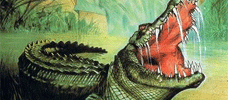
Dark Age
1987 -
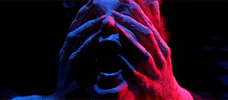
Inferno
1980 -
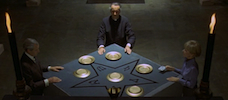
To the Devil a Daughter
UK / West Germany -

Trapped
1973 -
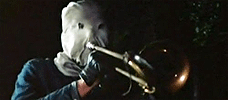
The Town that Dreaded Sundown
1976 -
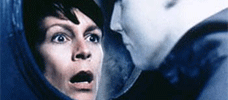
Halloween H20: Twenty Years Later
1998 -

Killdozer
1973 -
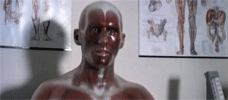
Pin
1989 -
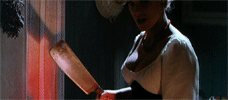
Frankenstein Created Woman
1967 -
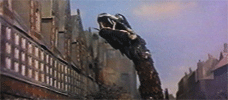
Reptilicus
1961 -
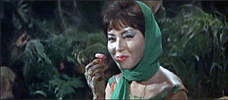
Matango
1963 -

I Still Know What You Did Last Summer
1998 -
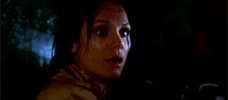
Night Terror
1977 -
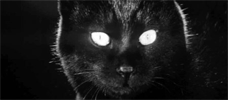
Kuroneko
1968 -

Demons
1985 -
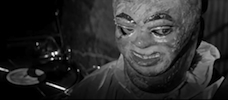
Paranoiac
1963 -
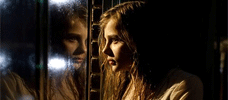
Let Me In
2010 -
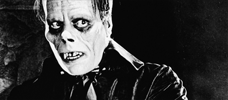
The Phantom of the Opera
1925
We don’t do comments anymore, but you may contact us here or find us on Twitter or Facebook.



